The Work Project and Hassell have enjoyed the benefit of working together since the co-working provider entered the Singapore market. How have their conversations about delivering spaces in an increasingly competitive flexible workplace sector evolved through the years? We hear from both of them in the light of The Work Project’s newly minted space at CapitaGreen.
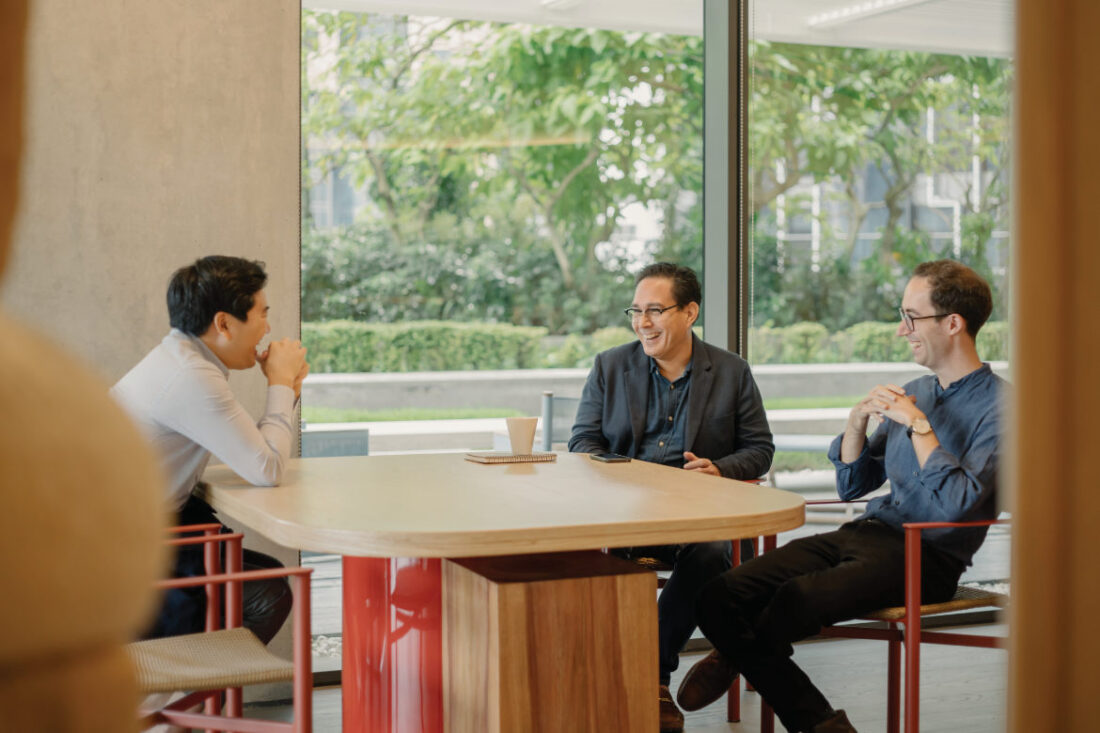
The Work Project has worked with the same design team for all six of its locations in Singapore. Photography by Khoo Guo Jie.
January 4th, 2022
Rachel Lee-Leong (RL): How did the collaboration between The Work Project and Hassell begin?
Matthew Shang (MS): I first worked with Junny and Sunny, who is Junny’s wife and Creative Director of The Work Project, on a residential project. That was the start of the relationship. Then we collaborated on The Work Project’s first project at OUE Downtown.
Junny Lee (JL): We’ve done all six of our projects in Singapore with Hassell, and with this particular team.
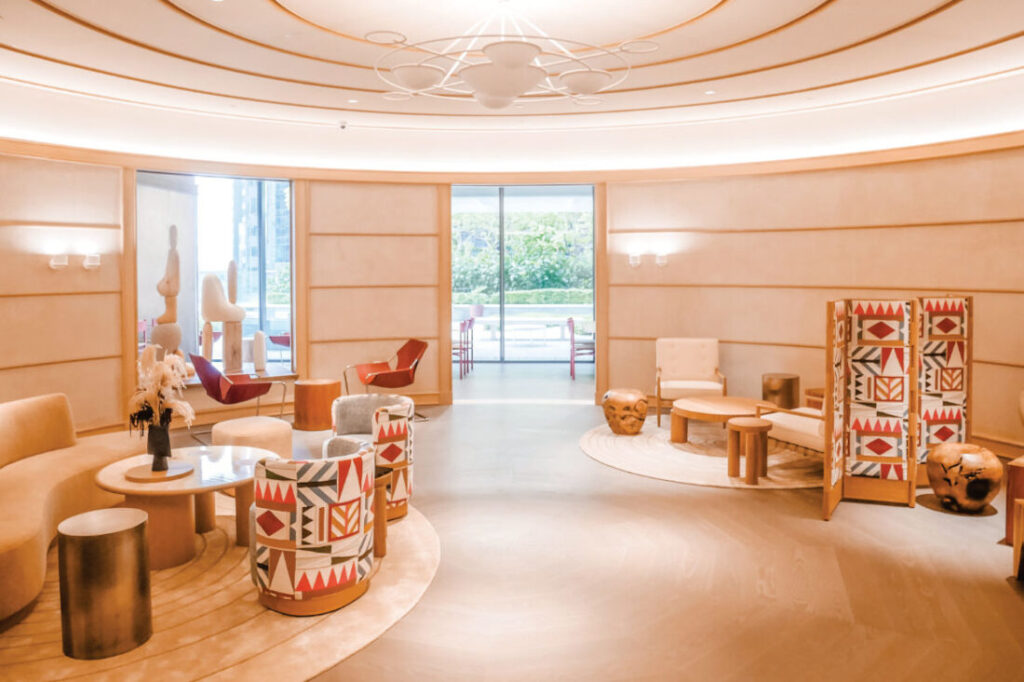
RL: Is there a standard approach that’s taken in designing The Work Project offices?
MS: I think there’s a particular culture around The Work Project. It doesn’t pretend to be a club. It’s very much a work environment. We have a beautiful aesthetic in all The Work Project offices, but there’s definitely a culture of a working practice associated with all their locations.
JL: While it’s important to have beautiful aesthetics and hospitality, it’s also important that the space is a high-performing office.
Alan McCorkindale (AM): There’s a library of components that we typically use for each project. Junny gives us a free hand in developing them and adapting them to each space, as long as you get a consistent experience – legibility as a user, same functionality, etc. So you have the same DNA but with different personalities.
JL: One of the unique things about the way we build offices and co-working spaces is that we think about them as an extension of the base building. So we’re not here to create something that’s completely out of place. We’re really thinking about what the base build architect has done and try to respect and pay homage to that work. That’s why all our locations look different.
MS: I think office spaces are often quite alien to where they are located. I don’t personally see the value in that. If you’ve got something to react to and it’s a positive thing, why not?
AM: For this project, we looked at a lot of Toyo Ito’s buildings. The circle motif is something that repeats a lot throughout the space and we borrowed that from Toyo Ito’s use of circles in his body of work.
JL: It’s almost like having an imaginary conversation with Toyo Ito – what would he have endorsed?
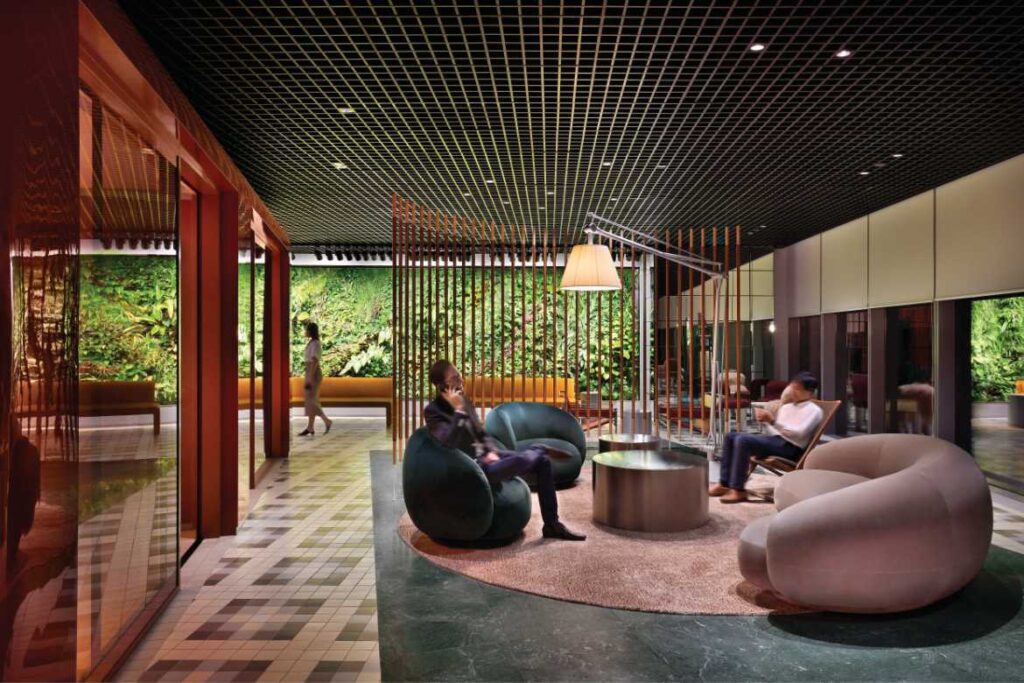
MS: We tried to react quite strongly to the base building, material-wise and also in key planning moments. The beauty of this location is that there’s a terrace space and an expanse of natural light coming in. The whole idea is that you meander towards the exterior rather than just have a direct line of sight to it from the reception area. If you’re a tenant or guest, you slowly discover it and go through a series of living spaces.
There’s also a bleeding out of the fit-out so that you don’t feel a disconnect when you move from the office into the building’s public space. We borrowed from the building’s circulation spaces in designing our main and secondary entrances. This gives a nice, generous arrival or exit moment. Often circulation spaces are considered secondary, so we try to celebrate them as much as we can.
JL: While the common spaces are an extension and celebration of the base build, we wanted the private client spaces to be a celebration of the client’s brand. It’s one of the key components of the brief, and a fairly new approach that we started about a year ago.
Our graphic design team would work with clients to create an entry experience that celebrates their brand. Inside the office, we leave one wall bare on purpose. We would get a brief from the client and customise the wall for them. We’ve done things as simple as applying a coat of paint to something as complicated as commissioning murals by local artists.
We started doing this because we now have a lot of larger clients and for them, it was important that they have a sense of identity within the space. Frankly speaking, it’s been a game-changer for us and is something that we do quite differently from our peers in the industry.

RL: With clients having a free hand in designing their office entryways, how do you maintain an experience and aesthetic that is cohesive?
MS: We developed the idea of the shopfront – that’s why we have the arches along the corridor. They have quite a strong articulation so that they define clearly where variety can come in. With this, you can create a cohesive environment.
JL: The arches articulate where one office starts and another ends. We imagined a corridor that celebrates a series of client logos and identities. It’s like the way you would look at a shopping mall where you have the Gucci shopfront, the Prada shopfront, etc. We want them to celebrate their identity and we try not to get in the way of this too much and help to facilitate it instead.
AM: In conversations about the workplace, it’s interesting that we’re seeing a kind of shift with less focus on productivity and more on identity and brand. That’s what’s going to bring people back to the office after working from home during the pandemic—a sense of belonging and purpose.

RL: What is the role of hospitality in a co-working space like this?
MS: From my point of view, it’s generosity of spirit. It could be the luxury of touch or having an aesthetic that’s just nice to look at. For example, one of the sculptures in this space was commissioned for a young Korean artist. It’s just a beautiful work sitting in the space. There’s something very generous about it, like a rarefied art gallery moment which you don’t expect in a conventional workplace.
I think the idea of textural moments was very important in this project—things that are hewn or even embroidery work. The evidence of handcrafted moments is really lovely. Before we started the project, we spent time in Los Angeles and visited the Proper Hotel there. It was a beautiful example of a collision of crafted elements and curated furniture. That was a key inspiration at the genesis of this project.
RL: How is The Work Project CapitaGreen different from the other locations?
AM: Operationally, this one only has private offices. There are no open-desking components, which we had in previous projects.
JL: Yes, we have exclusively enterprise suites in this location. Hot-desking is usually featured more heavily in our other offices. One of the things that’s unique to this tower compared to the other locations we’re in is that there is so much demand for serviced co-working spaces. A lot of the corporate tenants that are already in this tower wanted something that was private and branded so that it would be almost seamless going from here to their office upstairs.
RL: How does this relate to the role of co-working spaces in the long term?
JL: I think it’s now universally accepted that the flex workspace sector is and will increasingly become an important part of all company’s real estate portfolios, and we see it. We’ve had a busy start to the year with the announcement of Singapore’s Phase 3 re-opening in relation to COVID-19. The folks that are looking to come back to the office are looking at 6, 12 or 18 months in the flex sector first because they’re not quite ready to make a six-year bet on their future yet. Even those that have long-term commitments on real estate want some form of flexibility incorporated into their portfolio. So that’s a universal trend we see.
AM: Even though individuals and organisations are looking for that flexibility, they don’t want to compromise on beautiful amenities so that aligns very well with The Work Project’s offerings.
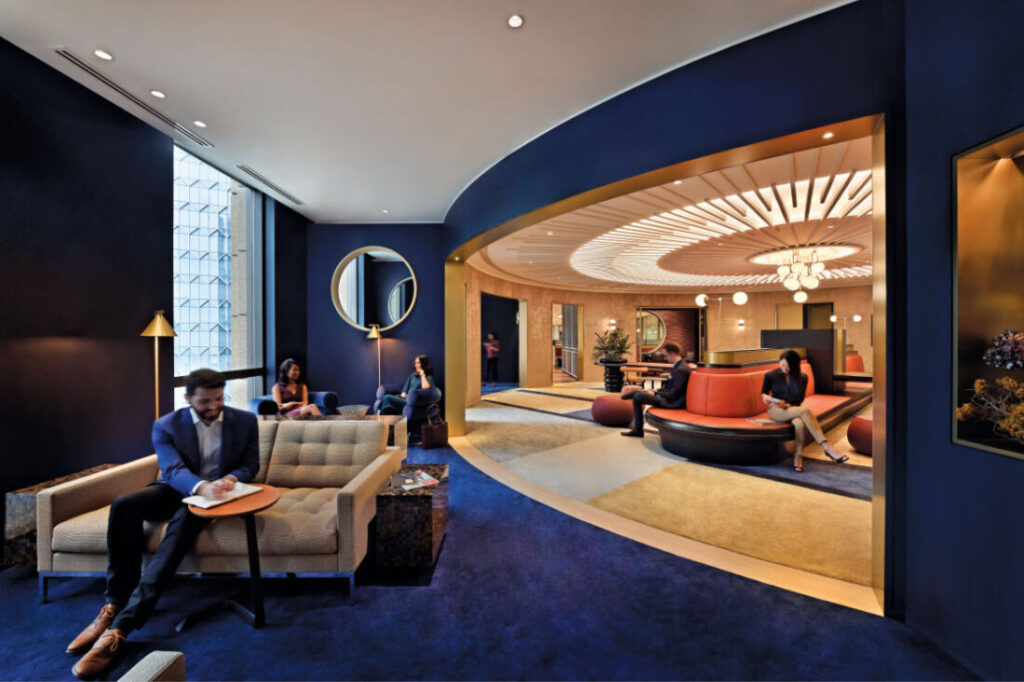
RL: How have your conversations about The Work Project offices evolved through the years as you worked together?
MS: I think the focus has changed. At the beginning, we were establishing some of the fundamentals. Those fundamentals still evolve—different scales, larger tenancies within— but I think at the beginning there was a lot more discussion about the set-up. Now we are a lot more confident with how those work and Junny has an in-house team that’s really quite proficient at looking at this too. So as designers, we can hone in on touch points in terms of the entry experience, the social experience, the meeting elements that we have.
JL: We have a lot more data points now so we’re confident about the general user behaviour within the space. So with things like where we need to put what, and how many, we’ve certainly become much more confident in delivering those.
There are a couple of things that are measured manually and others that are done automatically. With the meeting rooms, we know utilisation rates by the booking system. That informs us for our next projects—how many meeting rooms we need to build, what type of rooms, and how people like to congregate.
Other spaces like the pantry, we literally come during lunchtime every day and someone takes a data point and there’s a report that gets generated. For the lounge spaces, it’s slightly different. We’ll measure the timings at the peak hour point for various spaces to make sure we’ve got generous provisions everywhere.
RL: How do you respond if the original fit-out doesn’t correlate with the data collected?
JL: With our earlier projects when we didn’t have this data, we thankfully provided a lot of social spaces—in fact maybe too many. We didn’t change anything because it was already generous enough. I think the one thing we did tweak is that we had to create more meeting rooms on certain occasions. It was quite an easy fix. We just converted some of these private office spaces into meeting rooms.
MS: I think you also build flexibility into your offices in terms of the configurability of each one. That’s become quite efficient for you.
JL: We have meeting rooms built into some of the larger client offices. These spaces are built on a modularised system. Services are pre-planned on a grid and that enables us to erect partitions and create meeting rooms very quickly when clients need them. So there’s some flexibility there.

RL: What’s next for The Work Project?
JL: We’re doing quite a big centre at the upcoming CapitaSpring – a 65,000sqft office with more than 1,000 workstations over three floors. We’re fortunate to be working with Hassell again.
This one is unique because it’s a brand-new trophy in the middle of Raffles Place. Perhaps one of the most important office building developments coming up in the region in the next one year. It’s also unique because it’s the first project we’re undertaking with CapitaLand where we’ve been engaged as a management company rather than a tenant. It’s a management agreement between the landlord and us as an operator and is the first transaction of its kind in Singapore.
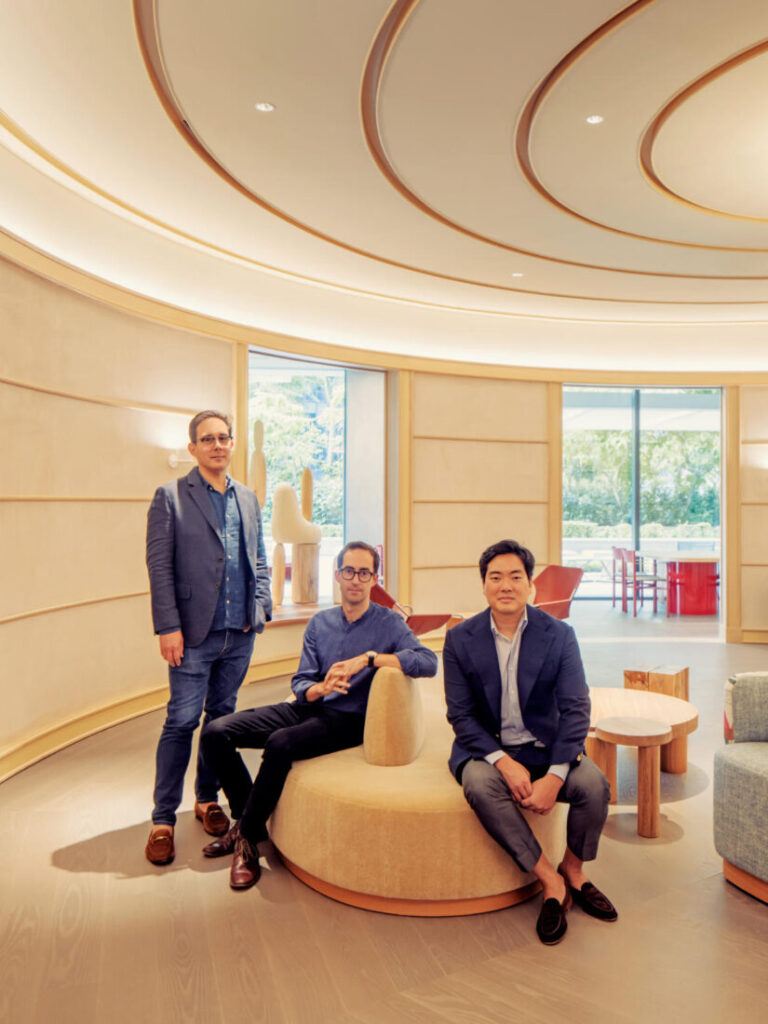
This article originally appeared in Cubes Issue 101: Make It Work
Related: How the pandemic worked in favour of coworking spaces
A searchable and comprehensive guide for specifying leading products and their suppliers
Keep up to date with the latest and greatest from our industry BFF's!

Create a configuration to suit your needs with this curved collection.

Suitable for applications ranging from schools and retail outlets to computer rooms and X-ray suites, Palettone comes in two varieties and a choice of more than fifty colours.

In the pursuit of an uplifting synergy between the inner world and the surrounding environment, internationally acclaimed Interior Architect and Designer Lorena Gaxiola transform the vibration of the auspicious number ‘8’ into mesmerising artistry alongside the Feltex design team, brought to you by GH Commercial.

Savage Design’s approach to understanding the relationship between design concepts and user experience, particularly with metalwork, transcends traditional boundaries, blending timeless craftsmanship with digital innovation to create enduring elegance in objects, furnishings, and door furniture.

Paying homage to that wonderful tool of life, the book, SJK Architects’ design for the new headquarters of Penguin Random House is both a temple to the library and a captivating place to work.

Simon Liley, Principal Sustainability Consultant at Cundall, writes about how cyberpunk dystopias haven’t (quite) come to pass yet – and how designers can avoid them.
The internet never sleeps! Here's the stuff you might have missed

Focusing on facade and green design, this pair of office blocks is designed to meet the most contemporary demands of workplace design.

Boasting unmatched cooking and food preservation capabilities, Sub-Zero and Wolf enable designers to set a new standard for kitchen design, and inspire a higher quality of culinary experience.